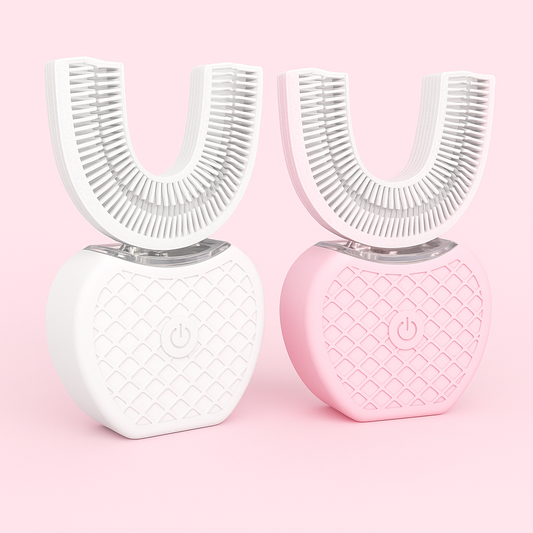Introduction
In 2025, pet owners are more aware than ever of the importance of holistic health care for their furry companions. Among the many facets of canine wellness, maintaining fresh breath stands out as both a sign of good health and a source of comfort during those cherished moments of close interaction. Bad breath, medically known as halitosis, is not just an unpleasant nuisance — it often signals underlying issues such as dental disease, digestive imbalances, or other systemic health concerns. Fortunately, with modern natural approaches and traditional care combined, you can effectively enhance your dog’s breath naturally. This comprehensive guide delves into proven, practical, and natural strategies designed to keep your dog’s breath fresh and their oral health optimal throughout 2025 and beyond.
1. Prioritize Regular Veterinary Dental Check-Ups
One of the most important steps to ensure your dog has fresh breath is to schedule regular professional dental examinations. Veterinarians can detect early signs of dental diseases that owners might miss and perform thorough cleanings to remove plaque and tartar buildup — the primary culprits behind foul odors.
- Why are dental check-ups essential? Over time, plaque hardens into tartar that harbors bacteria producing unpleasant smells and potentially causing gum inflammation and tooth decay.
- Recommended frequency: Most veterinarians advise annual dental check-ups, but dogs prone to dental problems may need more frequent visits.
- Advanced procedures: In some cases, professional cleanings under anesthesia are necessary to deeply clean below the gum line, preventing periodontal disease.
Regular veterinary care not only freshens breath but also helps prevent serious health issues that can arise from untreated oral infections.
2. Establish and Maintain a Consistent Tooth Brushing Routine
Brushing your dog's teeth is the single most effective at-home method to control plaque and maintain fresh breath. Despite being a challenge for some owners, perseverance and positive reinforcement can make it an enjoyable bonding activity.
- Select the right tools: Use toothbrushes and toothpaste formulated specifically for dogs; human toothpaste contains fluoride and other ingredients harmful to dogs.
- Start gradually: Introduce brushing gently by allowing your dog to taste the toothpaste and get used to you handling their mouth.
- Frequency matters: Aim to brush your dog’s teeth daily or at least 3-4 times a week to keep bacterial buildup minimal.
- Technique tips: Brush in circular motions covering all tooth surfaces, especially the back molars where plaque tends to accumulate.
Patience and consistency will pay off with fresher breath and healthier gums.
3. Utilize High-Quality Dental Chews and Treats
Dental chews are a practical way to supplement oral hygiene while satisfying your dog’s natural urge to chew. They help reduce plaque mechanically and stimulate saliva production, which naturally cleanses the mouth.
- Choosing chews wisely: Opt for products endorsed by veterinary dental associations or those with the Veterinary Oral Health Council (VOHC) seal.
- Types to consider: Rawhide alternatives, specially designed dental sticks, and edible dental bones are popular options.
- Monitor usage: Always supervise your dog during chewing sessions to prevent choking or ingestion of large pieces.
Incorporating dental chews into your dog’s routine can significantly contribute to fresher breath when combined with other oral care practices.
4. Incorporate Water Additives for Easy Oral Hygiene
Water additives offer a simple, effective way to reduce oral bacteria and plaque without the stress of brushing. These additives mix with your dog’s drinking water and work continuously throughout the day.
- Benefits: Help decrease bacterial load, reduce plaque formation, and freshen breath.
- Choosing safe products: Look for natural ingredients like chlorhexidine, cetylpyridinium chloride, or essential oils that are proven safe for dogs.
- Usage guidelines: Follow the manufacturer’s recommended dosage and ensure your dog drinks enough water daily.
Water additives complement brushing and chewing, providing a convenient layer of protection especially for dogs resistant to tooth brushing.
5. Enrich Your Dog’s Diet with Crunchy Fruits and Vegetables
Diet plays a crucial role in oral health. Crunchy fruits and vegetables act as natural toothbrushes by mechanically cleaning teeth and stimulating gums, while also providing valuable nutrients.
- Safe options include: Carrots, green beans, cucumbers, and apple slices (without seeds).
- Feeding tips: Cut foods into bite-sized pieces suitable for your dog’s size to prevent choking.
- Health benefits: These foods offer fiber, vitamins, and antioxidants supporting overall health.
- Precautions: Avoid toxic foods like grapes, raisins, onions, garlic, and anything sugary or processed.
Integrating these natural treats encourages chewing and contributes to fresher breath and dental health.
6. Support Digestive Health with Probiotics
Since bad breath can originate from gastrointestinal issues, maintaining a balanced gut microbiome is vital. Probiotics introduce beneficial bacteria that improve digestion and reduce odor-causing compounds.
- Choosing probiotics: Select canine-specific formulations with strains like Lactobacillus and Bifidobacterium.
- Consult your vet: Before adding supplements, discuss your dog’s health status to ensure safety and suitability.
- Benefits: Improved nutrient absorption, reduced gas, and less foul-smelling breath.
Probiotics are an excellent adjunct to oral care when digestive health influences breath quality.
7. Prepare Homemade Natural Dental Solutions
For owners who prefer natural remedies, there are simple, safe homemade dental care options to freshen breath and promote oral hygiene.
- Baking soda paste: A small amount of baking soda mixed with water creates a mild abrasive paste; use sparingly and not as a daily routine.
- Coconut oil application: Rich in lauric acid, coconut oil has antimicrobial properties that can help reduce oral bacteria; apply gently to teeth or add a teaspoon to food.
- Herbal rinses: Diluted chamomile or green tea rinses may soothe gums and reduce bacteria, but always check with your vet before use.
Important: Avoid ingredients harmful to dogs such as xylitol, garlic, onions, and artificial sweeteners.
8. Maintain Hydration and Encourage Regular Chewing
Good hydration helps maintain saliva flow, which naturally cleanses the mouth and neutralizes acids produced by bacteria.
- Ensure your dog has constant access to fresh, clean water.
- Encourage chewing by providing safe toys and dental-friendly treats that promote saliva production.
- Chewing also massages gums and helps reduce plaque buildup.
9. Monitor and Manage Underlying Health Conditions
Persistent bad breath can be a sign of other health issues beyond dental problems, including diabetes, kidney disease, or gastrointestinal disorders.
- Observe your dog for additional symptoms such as increased thirst, vomiting, weight loss, or behavioral changes.
- Seek veterinary advice promptly if bad breath persists despite good oral care.
Early diagnosis and treatment of systemic diseases can improve your dog’s overall health and breath quality.
Conclusion
Achieving and maintaining naturally fresh breath for your dog in 2025 involves a comprehensive approach combining veterinary care, consistent home oral hygiene, diet, and lifestyle modifications. By embracing these effective, natural tips, you not only improve your dog’s breath but also enhance their general health, comfort, and quality of life.
Remember, fresh breath is a reflection of a healthy mouth and body. Invest time and care into your dog’s oral routine, and you’ll enjoy many joyful, odor-free moments together for years to come.
Stay proactive, consult your veterinarian regularly, and tailor these strategies to your dog’s unique needs for the best results.


